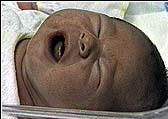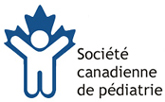COLLEGE OF PHYSICIANS & SURGEONS OF BRITISH COLUMBIA
Policy Manual - C-13, June 2004
INFANT MALE CIRCUMCISION
Until recently, only public health and religious views were taken into consideration in the debate over infant male circumcision. However, our understanding of medical practice must change as research findings become available. The College of Physicians and Surgeons of British Columbia is issuing this guide for physicians regarding routine infant male circumcision in light of evidence-based medicine and contemporary principles in ethics, law and human rights.
Infant male circumcision was once considered a preventive health measure and was therefore adopted extensively in Western countries. Current understanding of the benefits, risks and potential harm of this procedure, however, no longer supports this practice for prophylactic health benefit. Routine infant male circumcision performed on a healthy infant is now considered a non-therapeutic and medically unnecessary intervention. From a religious standpoint, infant male circumcision is acknowledged to be an important ritual and an integral part of Jewish and Islamic religions. Male circumcision is also practiced in other parts of the world as a rite of puberty.
A wider societal discussion on infant male circumcision is warranted based on a current understanding of bioethics that takes into account the non-therapeutic nature of the procedure as well as the high importance it plays in religious and traditional customs. This paper provides a discussion on current medical perspectives as well as relevant legal, human rights, and ethical considerations.
Medical Perspectives
Circumcision removes the prepuce that covers and protects the head or the glans of the penis. The prepuce is composed of an outer skin and an inner mucosa that is rich in specialized sensory nerve endings and erogenous tissue. Circumcision is painful, and puts the patient at risk for complications ranging from minor, as in mild local infections, to more serious such as injury to the penis, meatal stenosis, urinary retention, urinary tract infection and, rarely, even haemorrhage leading to death. The benefits of infant male circumcision that have been promoted over time include the prevention of urinary tract infections and sexually transmitted diseases, and the reduction in risk of penile and cervical cancer. Current consensus of medical opinion, including that of the Canadian and American Paediatric Societies and the American Urological Society, is that there is insufficient evidence that these benefits outweigh the potential risks. That is, routine infant male circumcision, i.e. routine removal of normal tissue in a healthy infant, is not recommended.
Legal Considerations
To date, the legality of infant male circumcision has not been tested in the Courts. It is thus assumed to be legal if it is performed competently, in the childs best interest, and after valid consent has been obtained.
At all times the physician must perform the procedure with competence, and at all times, the parent and physician must act in the best interests of the child. Signed parental consent for any treatment is assumed to be valid if the parent understands the nature of the procedure and its associated risks and benefits. However, proxy consent by parents is now being questioned. Many believe it should be limited to consent for diagnosis and treatment of medical conditions, and that it is not relevant for non-therapeutic procedures.
Human Rights Considerations
The matter of infant male circumcision is particularly difficult in regards to human rights, as it involves consideration of the rights of the infant as well as the rights of the parents.
Under the Canadian Charter of Rights and Freedoms and the United Nations Universal Declaration of Human Rights, an infant has rights that include security of person, life, freedom and bodily integrity. Routine infant male circumcision is an unnecessary and irreversible procedure. Therefore, many consider it to be unwarranted mutilating surgery.
Many adult men are increasingly concerned about whether their parents had the right to give consent for infant male circumcision. They claim that an infants rights should take priority over any parental rights to make such a decision. This procedure should be delayed to a later date when the child can make his own informed decision. Parental preference alone does not justify a non-therapeutic procedure.
Others argue that this stance violates the parents right to religious or cultural expression, and that adherence to their religious and cultural practices would be in the best interests of the infant.
Ethical Considerations
Ethical considerations regarding infant male circumcision centre on the welfare (or best interests) of the infant and the potential benefit and harm associated with the procedure. Ethics points us to corrective vision, i.e. to question practices that have become routine, or which we take for granted.
Therefore, each request for the procedure should be carefully evaluated, and an agreement to perform the procedure should take into consideration the ethical principles of beneficence (duty to benefit); non-maleficence (do no harm); veracity (accurate information); autonomy (consent); and justice (fairness).
These principles are articulated in specific responsibility statements (Items) in the College of Physicians and Surgeons of BC Code of Ethics. Also included below are items relating to physicians rights and care of the patient.
Beneficence (duty to benefit)
Item 1. Consider first the well-being of the patient.
Item 14. Recommend only those diagnostic and therapeutic procedures that you consider to be beneficial to your patient and not others.For Consideration: Medical evidence is that the benefits of routine infant male circumcision do not outweigh the risks of complications from the procedure. Best interests also take into account the infants social circumstances.
Non-maleficence (do no harm)
Item 33. Refuse to participate in or support practices that violate basic human rights.
For Consideration: Routine infant male circumcision does cause pain and permanent loss of healthy tissue.
Veracity (adequate information)
Item 13. Make every reasonable effort to communicate with your patients in such way that information exchanged is understood.
For Consideration: Discussion should include the new understanding that there is a lack of evidence of a real medical benefit in routine infant male circumcision, that it is non-therapeutic, and that only in rare situations is there any clinical indication for the procedure. Specifics of potential risks and complications should also be explained. It is important to ensure a meaningful discussion between physician and parents, and that the information provided is understood.
Autonomy (informed consent)
Item 12. Provide your patients with the information they need to make informed decisions about their medical care, and answer their questions to the best of your ability.
For Consideration: Parents must be given accurate and impartial information to assist them in making an informed decision. The infant, the actual patient, is unable to give consent. Proxy consent by parents for a non-therapeutic procedure is debatable.
Justice (fairness)
Item 29. Recognize that community, society and the environment are important factors in the health of individual patients.
For Consideration: Physicians should understand the basis for the request and consider the infants social and cultural circumstances and what might be in the infants best interest.
Physicians rights
Item 8. Inform your patient when your personal morality would influence the recommendation or practice of any medical procedure that the patient needs or wants.
For Consideration: If your personal beliefs dictate against infant male circumcision, this should be made known to your patients, with an offer of referral to another physician competent in performing the procedure.
Care of the Patient
Item 3. Provide for appropriate care for your patient, including physical comfort and spiritual and psychosocial support
Item 4. Practice the art and science of medicine competently and without impairment.
Item 6. Recognize your limitations and the competence of others, and, when indicated, recommend that additional opinions and services be sought.
For Consideration: As with any medical procedure, if for religious or cultural reasons you decide to perform an infant male circumcision, ensure that your skills are current. Expertise can be maintained only if a sufficient number of such circumcisions are performed.
Recommendation:
Best medical practice includes the following standards of practice for doctors who are asked to circumcise
male infants:
-
Keep up-to-date on the issues surrounding infant male circumcision, including the therapeutic medical indications and legal and ethical issues.
-
Advise parents that the current medical consensus is that routine infant male circumcision is not a recommended procedure; it is non-therapeutic and has no medical prophylactic basis; it is a cosmetic surgical procedure; current evidence indicates that previously-thought prophylactic public health benefits do not out-weigh the potential risks.
-
Provide objective medical information about the risk of complications and potential harm in infant male circumcision.
-
Discuss the new ethical considerations of infants rights and proxy consent in a non-therapeutic procedure.
-
Listen to parents and consider the basis of their request, which may be based on religious or cultural practices.
This paper is intended to help physicians use their professional judgement when a request is made for routine infant male circumcision. While parental preference is important, factors like the best available evidence regarding potential benefits and complications, alternatives to this intervention, the infants best interest, and current understanding of bioethics should be taken into consideration.
You are not obliged to act upon a request to circumcise an infant, but you must discuss the medical evidence and the current thoughts in bioethics that dissuade you from performing this procedure. You must also inform the parents that they have the right to see another doctor.
If you decide to perform the procedure for religious, cultural or other reasons:
-
Ensure that you have the necessary skills and experience, or ensure that the parents and child are referred to a physician who has these skills.
-
Obtain valid consent from both parents and ensure that both parents sign a consent form.
-
Provide the procedure under hygienic conditions with appropriate analgesia and aftercare.
Resources cited:
American Academy of Pediatrics. Task force on Circumcision.
Circumcision Policy Statement. Pediatrics 1999; 103: 686-693
British Medical Association Committee on Medical Ethics: The Law and Ethics of Male Circumcision guidance
for doctors, March 2003
Canadian Medical Association. Code of Ethics. Can Med Assoc J 1996; 155: 1176A-B
Canadian Paediatric Society. Neonatal circumcision revisited. Can Med Assoc J 1996: 154(6): 769-780
College of Physicians and Surgeons of BC. Code of Ethics. Policy Manual.
College of Physicians and Surgeons of Manitoba. Neonatal Circumcision. Winnipeg: College of Physicians and
Surgeons of Manitoba 1997
College of Physicians and Surgeons of Saskatchewan. Caution against Circumcision of Newborn Male Infants.
Feb 2002
Christakis DA, Harvey E, Zerr DM et al. A Trade-off Analysis of Routine Newborn Circumcision. Pediatrics
2000. 105: 246-249
Goodman J. Jewish Circumcision: an alternative perspective. BJU International 1999. 83: Suppl. 1,
22-27
Paton M. The Ethics of Circumcising Male Babies. The Bioethics Bulletin (June 1992). Edmonton,
University of Alberta.
Richards D. Male Circumcision: Medical or Ritual? Journal of Law and Medicine 1996. 3:371-376
Somerville M. Altering Baby Boys Bodies: the ethics of male circumcision. The Ethical Canary: Science,
Society and Human Spirit. Toronto: Viking, 2000:202-219
Szaz T. Routine Neonatal Circumcision: Symbol of the Birth of the Therapeutic State. Journal of Medicine
and Philosophy 1996:21:137-148
Patient resources:
"Circumcision is a 'non-therapeutic' procedure, which means it is not medically necessary."
Caring for Kids - Published by the Canadian Paediatric Society.
Answers to your questions about the Bioethics of Infant Circumcision. National Organization of Circumcision Information Resource Centers Publications.
The circumcision decision. Mayo Foundation for Medical Education and Research. Mayo Clinic Health Information.
Circumcision. How do I decide about circumcision? American Academy of Family Physicians.





